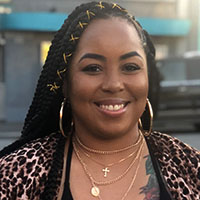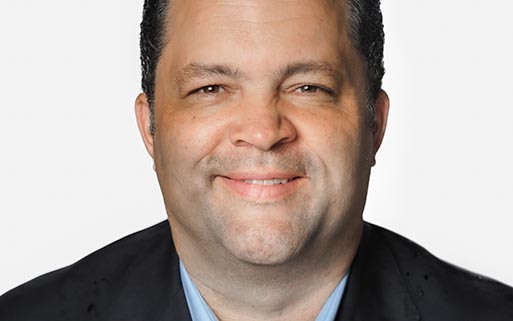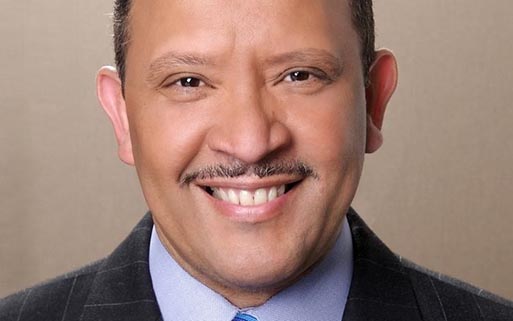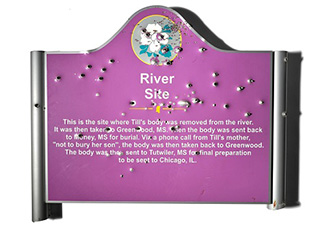
manager with the contact tracing
program for Public Health Seattle
King County, says they are able to
provide access to food and other
resources for people who test
positive for COVID-19.
By Aaron Allen, The Seattle Medium
Dominique Beaver, the program project manager with the Contact tracing program for Public Health Seattle King County, is doing her part to help curb the spread of COVID-19 in King County.
According to health officials, contact tracing or case investigation along with testing, is a basic component of medical detective-work, aimed at keeping your family, friends and community members safe if you may have exposed them to the virus. It is a crucial method for slowing and limiting the spread of COVID-19.
An essential strategy for limiting the spread of COVID-19, along with face coverings, handwashing and social distancing, Public Health’s Case Investigation and Contact Tracing Team call King County residents who have recently tested positive for COVID-19 and tracks individuals who they may have come into contact with.
In addition to tracing, Beaver and her colleagues also provide people who have tested positive for COVID with valuable resources that may be available to them during the time that they may have to quarantine. These resources include groceries, and medical consultations for the uninsured, undocumented or those who do not have access to adequate medical resources.
“We have a contract with Safeway, so we provide groceries for people who are in quarantine and isolation so that way they don’t have to leave their homes,” says Beaver. “We [also] have medical consultants with providers for our contact person program for people who are uninsured, undocumented or that do not have medical providers.”
The contract tracers are even able to provide access to financial resources for those who are unable to work while at home with the virus.
“We recently established the SWIQ program (Stipend for Workers Isolation and Quarantine) for people who are out of work during their quarantine and isolation period to receive financial funds to pay rent and things like that,” added Beaver.
According to Beaver, the County also provides temporary housing for individuals who do not have a place of their own to safely and properly isolate.
“We have what are called IC Motels for people who have tested positive but do not have a place to isolate and quarantine,” says Beaver. “There they do their ten-day isolation, there are nurses, food all that good stuff is provided at the IC Motels.”
According to Public Health data, there are 77 contact tracers who work approximately 28 percent of the cases in the region. In a weeks’ time tracers’ interview around 80 percent of the total number of cases with 43 percent of the cases interviewed the same day they are received.
Data from the past four weeks suggests that the tracer teams typically reach people who are newly diagnosed with COVID 8.1 days after the estimated start of viral shedding. However, the success of this program is based solely on the collective participation of the community.
“We get around 500 cases on the tracker every day that we are working on, yet we don’t get a hold of everyone,” says Beaver. “Roughly, we complete at least over one hundred cases per day. And so, we do several attempts to reach out and connect to get their experience with COVID-19 and to let them know what’s going on with COVID-19.”
Even though they are diligent about reaching out to individuals in their caseload, contact tracers still have a hard time reaching everyone – which would go a long way in helping to slow or limit the spread of COVID.
“We found sometimes is that people do not answer the calls, sometimes these types of calls are blocked or anonymous and people do not answer these calls,” said Daphne Pie, a health services administrator with Public Health Seattle & King County, during a recent interview on Rhythm & News with Chris B. Bennett on 1420 KRIZ and 1620 KYIZ.
“Answering these calls is important because what the contact tracer is going to do is ask a series of question about things one may need help with. Do you need food, transportation, financial assistance etc.?” added Pie.
Once a positive case is contacted tracers then keep in contact with the patient daily to see how they are doing or if they are in need of services/assistance.
“We send out daily text messages every day to check in,” says Beaver. “We then give them the options to either opt out or opt in regarding if they need assistance, if they have questions, they can text in and this is how we keep connected with everyone throughout their isolation period.”
Beaver, like many of his colleagues, takes her job seriously and knows that she is part of a very important line of defense against the spread of the virus. Although they’ve seen a rise in the numbers of people contracting the disease, Beaver maintains a positive outlook about the role of contact tracers in the process to help end the pandemic.
“I think we have been successful, says Beaver.“I believe it is important that we reach out to our community and reaching out to the cases that are positive to let them know that we are doing our part, we care, we want to be able to provide you with resources as much as we can. So, that is our part in helping with COVID-19 and all that is going on in this tough time.
“We are just trying to do our part in helping our community,” concluded Beaver.















